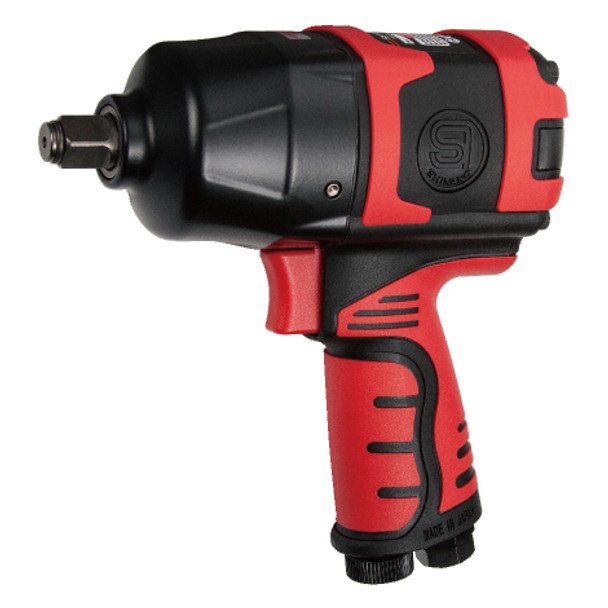- Adopting quiet pneumatic tools significantly reduces the risk of hearing damage, enhances compliance with noise regulations, and increases overall productivity by creating a more conducive working environment.
- The ongoing innovations in tool design and system configurations demonstrate a commitment to improving both the efficiency and safety of air-powered tools, making them a wise choice for professionals across various sectors.

Introduction
In modern workshops and construction sites, the clamor of power tools often dominates the soundscape. However, in settings where noise sensitivity is paramount—such as residential areas, hospitals, and schools—the demand for quieter operations becomes crucial. Pneumatic tools, known for their efficiency and power, are also advancing in noise reduction. This article explores how innovations in pneumatic technology lead to the development of quiet pneumatic tools, making them ideal for noise-sensitive applications while ensuring worker safety and comfort.

Understanding Noise in Pneumatic Tools
Pneumatic or air tools operate on compressed air supplied by an air compressor. Traditionally, these tools have been associated with high noise levels due to air compression and exhaust mechanics. The noise primarily originates from three sources:
- Air Exhaust: As compressed air exits the tool, it can create a loud hissing or popping sound.
- Vibration: The rapid movement of internal components, especially in tools like pneumatic drills or hammers, generates significant vibration, contributing to overall noise output.
- Motor Operation: The operation of the air motor itself within tools like grinders and sanders produces substantial sound.
Combined, These factors can lead to noise levels that are irritating and potentially harmful, contributing to hearing loss over prolonged exposure. Recognizing these challenges, manufacturers are now focusing on designing low-noise power tools that mitigate these issues without compromising on performance.
Innovations Leading to Quieter Operation
The quest for noiseless air tools has led to several key innovations in tool design and system setup:
- Sophisticated Exhaust Systems: Modern air tools are equipped with mufflers and baffles that significantly reduce noise by controlling the flow and velocity of air as it exits the tool. These systems disperse air more quietly and efficiently.
- Improved Component Integration: Manufacturers have reduced vibration-related noise by refining the fit and interaction of moving parts within the tools. This lowers the sound output and enhances the tool’s longevity and reliability.
- Enhanced Motor Designs: Newer models of pneumatic tools feature motors designed for quiet operation, using technologies that minimize mechanical noise. These advancements include smoother gearing and the use of materials that dampen sound transmission.
By integrating these technologies, manufacturers of pneumatic tools are creating options that allow for quieter operation, thus expanding their usability in environments where noise is a concern. This is a significant step forward in making pneumatic tools more versatile and improving the working conditions for many professionals.
Quiet Pneumatic Tools: Application and Advantages
As the development of low-noise power tools progresses, specific types of pneumatic tools have emerged as leaders in combining performance with reduced sound levels. These innovations address a critical need in industries where noise pollution affects worker health and compliance with local noise regulations.
Types of Quiet Pneumatic Tools
- Quiet Air Drills: These drills incorporate precision-engineered motors and exhaust mufflers that not only decrease noise output but also prevent the loss of power, ensuring efficient drilling with minimal disturbance.
- Low-Noise Impact Wrenches: Featuring specially designed air chambers and quieter operation modes, these wrenches maintain high torque levels while significantly reducing noise, making them suitable for automotive and construction tasks in noise-sensitive areas.
- Silent Air Sanders: With improved bearing designs and vibration dampening technologies, these sanders offer high performance with substantially less noise and vibration, ideal for fine finishing work in woodworking and auto body repair.
Advantages of Using Quiet Pneumatic Tools
The benefits of integrating quiet pneumatic tools into daily operations are manifold:
- Enhanced Worker Safety: Continuous exposure to high noise levels can lead to hearing impairment. Quiet pneumatic tools help mitigate this risk, contributing to a safer workplace.
- Compliance with Regulations: Many urban areas have strict noise ordinances. Using low-noise tools helps businesses comply with these regulations, avoiding fines and enabling night-time or residential work.
- Increased Productivity: Quieter work environments are less fatiguing, which can lead to increased focus and efficiency among workers.
These tools are not only transforming the way tasks are completed but are also setting new standards for health and safety in industries traditionally plagued by noise issues.
Strategic Noise Control in Pneumatic Systems
In addition to tool-specific innovations, entire pneumatic systems can be optimized for quieter operation:
- Air Supply Optimization: Configuring the air supply with proper hoses and fittings can reduce air turbulence, one of the key contributors to noise. Regular maintenance of compressors and air lines also prevents inefficiencies that can increase noise levels.
- Use of Anti-Vibration Mounts: Implementing anti-vibration mounts and pads in the setup of pneumatic tools and air compressors can drastically reduce the transmission of vibration-induced noise.
- Routine Training and Awareness: Educating workers on the proper use and maintenance of pneumatic tools is crucial. This includes training on how to install and use mufflers and silencers effectively.
These strategies ensure that the benefits of quiet air tools are fully realized, enhancing the quality of work life and compliance with safety standards.
Next, we will conclude with a summary of key points, address frequently asked questions about quiet pneumatic tools, and provide a direct call to action for those interested in exploring these innovative solutions from Pneumatic Tools and Accessories.
Conclusion: Embracing the Quiet Revolution in Pneumatic Tools
The evolution towards quieter air tools represents a significant leap forward in tool technology, marrying the traditional strengths of air-powered devices with the modern necessity for quieter operation. These advancements enhance workplace safety and extend the applicability of pneumatic tools to environments where noise is a critical concern.
FAQs About Quiet Pneumatic Tools
1. How much noise reduction can be expected from quiet pneumatic tools compared to standard models?
Quiet air tools can reduce noise levels by up to 50%, depending on the design and the specific application.
Are quiet pneumatic tools more expensive than their standard counterparts?
While quiet air tools may carry a premium due to advanced technology and materials, the long-term benefits in safety, compliance, and comfort often justify the initial investment.
3. Can existing pneumatic tools be modified to reduce their noise output?
Yes, some modifications, such as adding mufflers, exhaust diffusers, or anti-vibration mounts, can significantly reduce noise levels in existing tools.
4. Do quiet pneumatic tools require special maintenance?
Maintenance procedures for quiet air tools are generally similar to those for standard tools, though adherence to maintenance schedules is crucial for maintaining low noise levels.
5. Where can I purchase quiet pneumatic tools?
Quiet pneumatic tools are available at specialized tool suppliers and can also be ordered directly from manufacturers who focus on low-noise tool solutions.
Related Article;
The Essential Guide to Pneumatic Tools in Industrial Settings: Maximizing Efficiency and Safety
Enhancing Efficiency with Pneumatic Tools and Accessories
Energy Efficiency of Pneumatic Tools
Call to Action
If you’re ready to enhance your toolkit with high-performance, low-noise pneumatic tools, visit Pneumatic Tools and Accessories. We offer a wide range of quiet pneumatic tools that provide powerful performance without the noise. For more information or personalized advice on selecting the right tools for your needs, contact us at sales@pneumatictoolz.com. Embrace the quiet revolution in your industry with Air Tools and Accessories—where powerful tools meet quiet innovation.
By integrating quiet air tools into your operations, you can not only adhere to health and safety standards but also contribute to a more sustainable and pleasant working environment. These tools are a testament to the advancements in pneumatic technology that prioritize both efficiency and the well-being of users.



